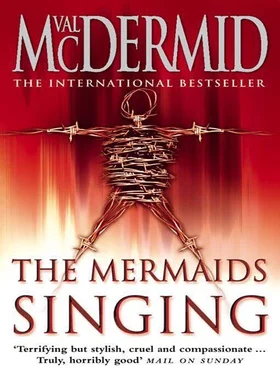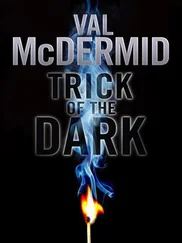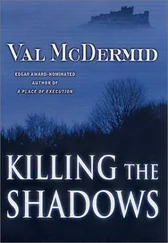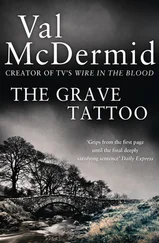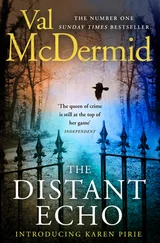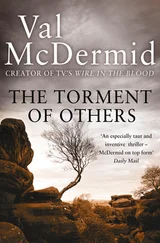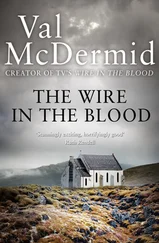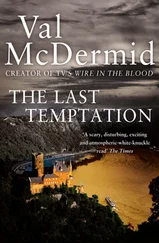Val McDermid - The Mermaids Singing
Здесь есть возможность читать онлайн «Val McDermid - The Mermaids Singing» — ознакомительный отрывок электронной книги совершенно бесплатно, а после прочтения отрывка купить полную версию. В некоторых случаях можно слушать аудио, скачать через торрент в формате fb2 и присутствует краткое содержание. Жанр: Полицейский детектив, на английском языке. Описание произведения, (предисловие) а так же отзывы посетителей доступны на портале библиотеки ЛибКат.
- Название:The Mermaids Singing
- Автор:
- Жанр:
- Год:неизвестен
- ISBN:нет данных
- Рейтинг книги:5 / 5. Голосов: 1
-
Избранное:Добавить в избранное
- Отзывы:
-
Ваша оценка:
- 100
- 1
- 2
- 3
- 4
- 5
The Mermaids Singing: краткое содержание, описание и аннотация
Предлагаем к чтению аннотацию, описание, краткое содержание или предисловие (зависит от того, что написал сам автор книги «The Mermaids Singing»). Если вы не нашли необходимую информацию о книге — напишите в комментариях, мы постараемся отыскать её.
The Mermaids Singing — читать онлайн ознакомительный отрывок
Ниже представлен текст книги, разбитый по страницам. Система сохранения места последней прочитанной страницы, позволяет с удобством читать онлайн бесплатно книгу «The Mermaids Singing», без необходимости каждый раз заново искать на чём Вы остановились. Поставьте закладку, и сможете в любой момент перейти на страницу, на которой закончили чтение.
Интервал:
Закладка:
The Mermaids Singing
Val McDermid
I have heard the mermaids singing, each to each.
I do not think that they will sing to me.
‘ The Love Song of J. Alfred Prufrock ’, T. S. EliotFROM 3" DISK LABELLED: BACKUP. 007; FILE LOVE. 001
You always remember the first time. Isn’t that what they say about sex? How much more true it is of murder. I will never forget a single delicious moment of that strange and exotic drama. Even though now, with the benefit of experience and hindsight, I can see it was an amateurish performance, it still has the power to thrill, though not any longer to satisfy.
Although I didn’t realize it before the decision to act was forced upon me, I had been paving the way for murder well in advance. Picture an August day in Tuscany. An air-conditioned coach whisking us from city to city. A bus-load of Northern culture vultures, desperate to fill every moment of our precious fortnight’s package with something memorable to set against Castle Howard and Chatsworth.
I’d enjoyed Florence, the churches and art galleries filled with strangely contradictory images of martyrdom and Madonnas. I had scaled the dizzy heights of Brunelleschi’s dome surmounting the immense cathedral, entranced by the winding stairway that leads up from the gallery to the tiny cupola, the worn stone steps tightly sandwiched between the ceiling of the dome and the roof itself. It was like being inside my computer, a real role-playing adventure, working my way through the maze to daylight. All it lacked were monsters to slay on the way. And then, to emerge into bright day and amazement that up here, at the end of this cramped ascent, there was a postcard and souvenir seller, a small, dark, smiling man stooped from years of lugging his wares aloft. If it had really been a game, I would have been able to purchase some magic from him. As it was, I bought more postcards than I had people to send them to.
After Florence, San Gimignano. The town rose up from the green Tuscan plain, its ruined towers thrusting into the sky like fingers clawing upwards from a grave. The guide burbled on about ‘a medieval Manhattan’, another crass comparison to add to the list we’d been force-fed since Calais.
As we neared the town, my excitement grew. All over Florence, I’d seen the advertisements for the one tourist attraction I really wanted to see. Hanging splendidly from lampposts, gorgeous in rich red and gold, the banners insisted that I visit the Museo Criminologico di San Gimignano. Consulting my phrasebook, I’d confirmed what I’d thought the small print said. A museum of criminology and torture. Needless to say, it wasn’t on our cultural itinerary.
I didn’t have to search for my target; a leaflet about the museum, complete with street plan, was thrust upon me less than a dozen yards inside the massive stone gateway set in the medieval walls. Savouring the pleasure of anticipation, I wandered around for a while, marvelling at the monuments to civic disharmony that the towers represented. Each powerful family had had its own fortified tower which they defended against their neighbours with everything from boiling lead to cannons. At the peak of the city’s prosperity, there were supposedly a couple of hundred towers. Compared to medieval San Gimignano, Saturday night down the docks after closing time seems like kindergarten, the seamen mere amateurs in mayhem.
When I could no longer resist the pull of the museum, I crossed the central piazza, tossing a bicoloured 200-lire coin in the well for luck, and walked a few yards down a side street, where the now familiar red and gold hangings adorned ancient stone walls. Excitement buzzing in me like a blood-crazed mosquito, I walked into the cool foyer and calmly bought my entrance ticket and a copy of the glossy, illustrated museum guide.
How can I begin to describe the experience? The physical reality was so much more overwhelming than photographs or videos or books had ever prepared me for. The first exhibit was a ladder rack, the accompanying card describing its function in loving detail in Italian and English. Shoulders would pop out of their sockets, hips and knees separate to the sound of rending cartilage and ligament, spines stretch out of alignment till vertebrae fell apart like beads from a broken string. ‘Victims,’ the card said laconically, ‘often measured between six and nine inches taller after the rack.’ Extraordinary minds the inquisitors had. Not satisfied with interrogating their heretics while they were alive and suffering, they had to seek further answers from their violated bodies.
The exhibition was a monument to the ingenuity of man. How could anyone not admire the minds that examined the human body so intimately that they could engineer such exquisite and finely calibrated suffering? With their relatively unsophisticated technology, those medieval brains devised systems of torture so refined that they are still in use today. It seems that the only improvement our modern post-industrial society has been able to come up with is the additional frisson provided by the application of electricity.
I moved through the rooms, savouring each and every toy, from the gross spikes of the Iron Maiden to the more subtle and elegant machinery of pears, those slender, segmented ovoids which were inserted into vagina or anus. Then, when the ratchet was turned, the segments separated and extended till the pear had metamorphosed into a strange flower, petals fringed with razor-sharp metal teeth. Then it was removed. Sometimes the victims survived, which was probably a crueller fate.
I noticed unease and horror on the faces and in the voices of some of my fellow visitors, but recognized it for the hypocrisy it was. Secretly, they were loving every minute of their pilgrimage, but respectability forbade any public display of their excitement. Only the children were honest in their ardent fascination. I would have happily bet that I was far from the only person in those cool, pastel rooms who felt the surge of sexual desire between their legs as we drank in the exhibits. I have often wondered how many holiday sexual encounters have been spiced and salted by the secret recollection of the torture museum.
Outside, in a sun-drenched courtyard, a skeleton crouched in a cage, bones clean as if stripped by vultures. Back in the days when the towers stood tall, these cages would have hung on the outer walls of San Gimignano, a message to inhabitants and strangers alike that this was a city where the law exacted a harsh penalty if it was not respected. I felt a strange kinship with those burghers. I too respect the need for punishment after betrayal.
Near the skeleton, an enormous metal-shod spoked wheel leaned against the wall. It would have looked perfectly at home in an agricultural museum. But the card fixed to the wall behind it explained a more imaginative function. Criminals were bound to the wheel. First, they were flayed with scourges that ripped the flesh from their bones, exposing their entrails to the eager crowd. Then, with iron bars, their bones were broken on the wheel. I found myself thinking of the tarot card, the wheel of fortune.
When I realized I was going to have to become a killer, the memory of the torture museum rose before me like a muse. I’ve always been good with my hands.
After that first time, part of me hoped I wouldn’t be forced to do it again. But I knew that if I had to, the next time it would be better. We learn from our mistakes the imperfections of our actions. And luckily, practice makes perfect.
1
Gentlemen, I have had the honour to be appointed by your committee to the trying task of reading the Williams’ Lecture on Murder, considered as one of the Fine Arts; a task which might be easy enough three or four centuries ago, when the art was little understood, and few great models had been exhibited; but in this age, when masterpieces of excellence have been executed by professional men, it must be evident, that in the style of criticism applied to them, the public will look for something of a corresponding improvement.
Читать дальшеИнтервал:
Закладка:
Похожие книги на «The Mermaids Singing»
Представляем Вашему вниманию похожие книги на «The Mermaids Singing» списком для выбора. Мы отобрали схожую по названию и смыслу литературу в надежде предоставить читателям больше вариантов отыскать новые, интересные, ещё непрочитанные произведения.
Обсуждение, отзывы о книге «The Mermaids Singing» и просто собственные мнения читателей. Оставьте ваши комментарии, напишите, что Вы думаете о произведении, его смысле или главных героях. Укажите что конкретно понравилось, а что нет, и почему Вы так считаете.
